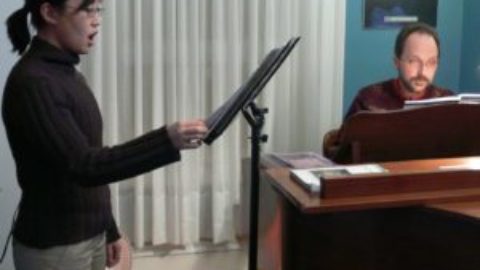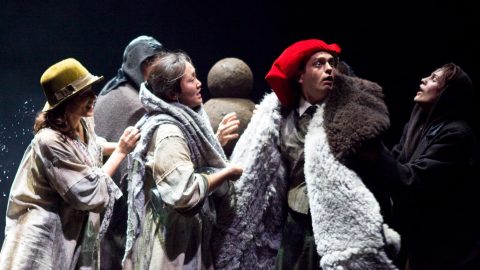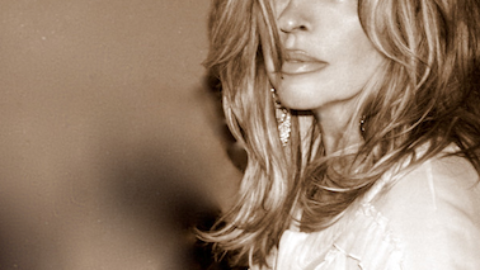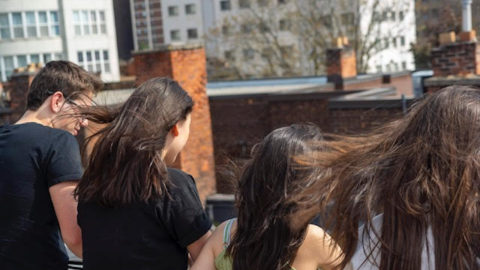Hamilton Conservatory for the Arts is thrilled to offer flamenco dance workshops for both teens and adults on Friday nights, beginning in May. Leading Canadian flamenco artist and teacher Carmen Romero joins us from Toronto, where she runs the flamenco collective Compañía Carmen Romero. We spoke to Carmen about her dance background, what makes flamenco such a special art form, and how she approaches teaching. To find out more about Carmen’s Teen Classes, please visit our Dance Department page. To learn about her Adult classes – along with other upcoming workshops in dance, theatre, visual arts, and music – check out our Adult Workshop page.
What’s your personal history with flamenco dance, and how did you decide to pursue it professionally?
My parents loved it. My father was from Southern Spain and my mother from Germany. Flamenco music was always playing in our home, However, I did not get bitten until I actually saw a live flamenco performance. When I saw the beautiful women stamping their feet powerfully in the ground, I put the sound and image together and knew that I wanted to learn how to do this. I was eight years old at the time. The next day, I looked in the phone book (before cellphones!) and I found the only school listed at the time, and it was the Paula Moreno Spanish Dance School. My parents signed me up and the rest is history. When I was thirteen, I started to train privately with famous flamenco dancers that came to Canada to perform at the historical Don Quijote Restaurant in Toronto. I first trained with the infamous Manolete Maya, then La Tati. At age fifteen, I took a year off high school and trained in Spain. I returned when I was seventeen, yet over the years continue to return to Spain to research and train. I started performing professionally by the time I was fifteen. I danced with local groups as well as at Canada’s Wonderland for six seasons. This was an excellent training ground for what became the beginning of school. After shows people would ask me for lessons and eventually one student led to two and now I run a school in Toronto.
For those who are new to flamenco or don’t know very much about it, how would you describe the ‘essence’ of the art form? What are the defining characteristics of flamenco?
Flamenco is one of Spain’s many dance forms that originated in Southern Spain by the Roma people that migrated there from northern Europe, Asia and Africa. Flamenco is an artform that celebrates the amalgamation of many cultures. I would like to try and give you a visual, musical and emotional description. I would say that Flamenco is visually both exciting as it is vigorous and pulsing yet sensuous and earthy. It is very percussive from the clapping, footwork and is mostly accompanied by the guitar and a singer who sometimes sounds like they are yelling in despair or cheering in happiness! The extremes in flamenco are what makes you feel alive. Flamenco is about life and death and everything in between.
You have so many career highlights over the years. Is there one special moment in your career that has stood out to you?
It is hard to choose. I would have to say my experience working with Shakira was memorable on so many levels. At first when I met her I was star-struck but when she played the music and started to dance, I got right to work with her. She is very hard working and down to earth. She listened to my suggestions and used them. To me this was an example of how my work has value and impact outside of its traditional setting. It also made me feel really good about myself, in that I contributed my knowledge, ideas and love for flamenco to a project that was pretty huge. I was respected by someone I respected, and this gave me confidence to go beyond my perceived four walls. I took greater creative risks. I trained and studied more. I was excited about what else I could do. So, I am very grateful for the opportunity.
When you choreograph and perform with your group Compañía Carmen Romero, what do you find most connects and resonates with audience members?
As a dancer/performing artist, my forte is in improvisation. This means that I feed off of the energy of the people on stage and the audience, as in my opinion they are very much a part of the performance. This informs my method of choreography as I seek to make “connections and relationships.” I tell stories on stage or convey an idea or feeling. I seek to engage, and I believe that the audience for a moment in time forgets where they were as they are in that moment with us. Every review I have ever had always describes how the audience has been impacted in a way that made them part of the show, energetically, spiritually and emotionally. In 2017, I created a production called Jacinto, named after my father. This production told his story and celebrated his life. I unexpectedly received emails from audience members, telling me their stories of losing a loved one and how Jacinto allowed them to relive the loss in a way that gave them closure.
How do you see modern flamenco growing and transforming in Canada?
That’s a BIG question. Flamenco is an artform that has been around for centuries. How is it that it remains relevant? For anything to survive it must evolve while retaining its original DNA. When it evolves, “it” takes from its environment and incorporates and assimilates qualities that can be understood by those who perform it and observe it. It remains relevant if it tells stories or relates to ideas that are current – ie. the music by incorporating new instruments and different textures in the costumes, etc.
Here is a good example of how I used the movement vocabulary and essence of flamenco in a very contemporary setting:
“I define my self” was a commission by the Canadian Stage Company for the National Arts Centre in Ottawa innovation project.
Your company’s motto is ‘Discover your passion!’ and Hamilton Conservatory’s tagline is ‘Follow your passion.’ What role does passion play in flamenco, and how does it define your flamenco practice?
Passion is energy. It makes us feel and compels us to take action. Humans need to feel and interact in meaningful ways. When we don’t, we are stuck. My philosophy of dance, flamenco and my practice is that anyone can dance, sing and play an instrument. You just need proper guidance. It is through the act of learning, doing and expressing that we learn about ourselves and each other. This is what energizes us and makes us feel alive! Here is a cute clip of what my youngest students had to say about what flamenco is.
What is your instructional philosophy and the most rewarding aspect of teaching? What can people expect from your workshops at HCA?
My instructional philosophy is simply that my classes are inclusive and a safe place to explore. When we are in a state of learning we are vulnerable. My students should always feel like they belong and that they are safe to explore their feelings and creativity as well as their perceived limits. It is my personal goal to reach everyone in class and pay attention to each student so that I can identify how they learn and then teach them. Dance and flamenco is my true love after my daughter. I am fulfilled and grateful when someone trusts in me to guide them. I am proud when I see someone execute something I have taught them, with power, passion and grace. Furthermore, I am in awe when they take what I taught them and develop it to the next level. Every great teacher should have a student that one day will excel. I have many students who have gone on to create their own works and performing companies and have won awards. This gives me great purpose and pride.








